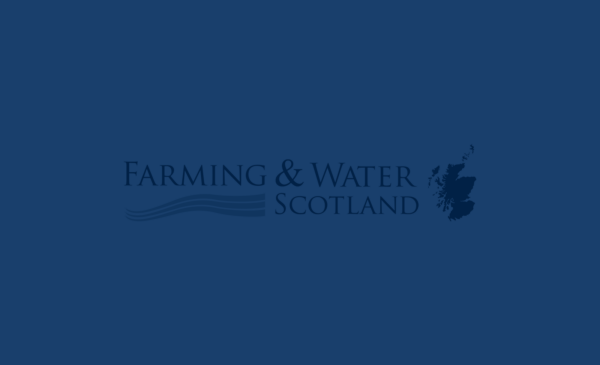Waste pesticide
It is illegal to store and use pesticides which are passed their expiry date or approval has been withdrawn. All pesticides which have passed their expiry date must be disposed of as per guidance of special waste disposal. In addition, pesticides, which have lost their label can no longer be used and must be disposed of. If you have a change of cropping on farm and the pesticides are no longer a viable option for that crop the pesticides must be removed from the farm.
If you discover a container which is deteriorating place whole container inside appropriately sized leak proof container and follow special waste guidelines immediately or contact supplier for disposal recommendations.
Pesticide washings
If pesticide washings are to be disposed of to land you must have a licence under the Controlled Activities Regulations, issued by SEPA. Other disposal options include:
- Removing the waste by a licensed waste disposal company
- Disposing of material to a biobed/biofilter (waste exemption required)
- The tank washing can be used to apply to treated or untreated crops as per the product approval guidelines (do not exceed maximum doses).
The disposal of material to a biobed/biofilter, see Figure 4 and Figure 5, requires a Paragraph 42 The disposal of waste pesticide solutions or washings in a lined biobed exemption from SEPA.
A biobed is a specially lined excavated pit designed to reduce the levels of pesticides within wastewater.
A biofilter is a similar to a biobed, however, instead of a pit it is constructed with intermediate bulk containers.
For more information The Voluntary Initiative has produce a range of resources to guide you through how to install and utilise these treatment facilities.
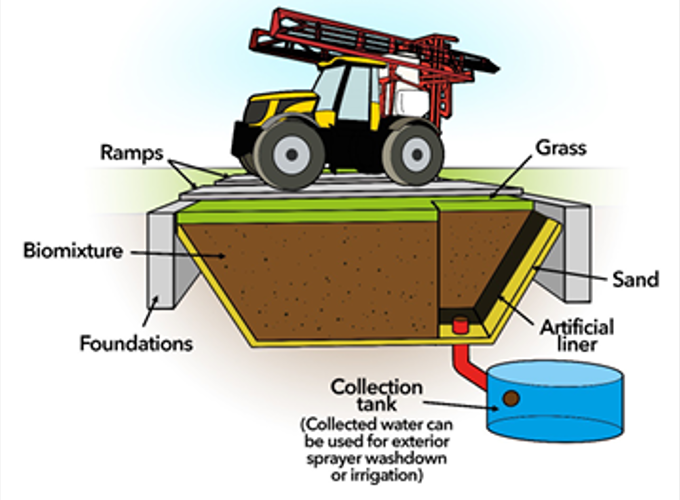
Figure 4: Example of a biobed. Source KTR12 Pesticides
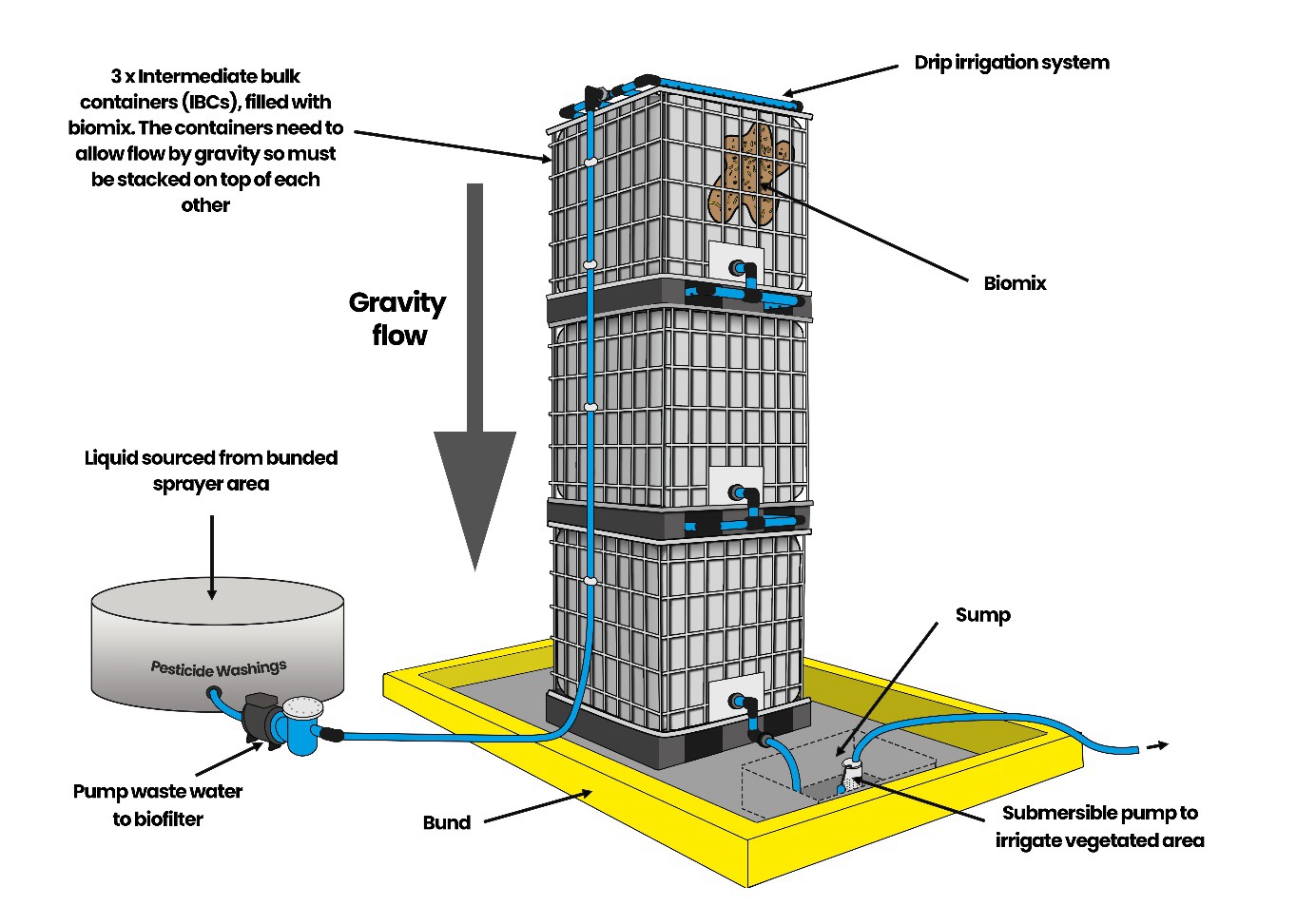
Figure 5: Example of biofilter
The containers and packaging which pesticides generate need to be handled and disposed of correctly and responsibly. These materials will contain traces of chemicals, which can be detrimental to the environment if allowed to reach water environments and need to be carefully and legally managed. As explained in the waste management section for all waste produce handled on your farm, you have a legal responsibility to store, transport and dispose of the waste. 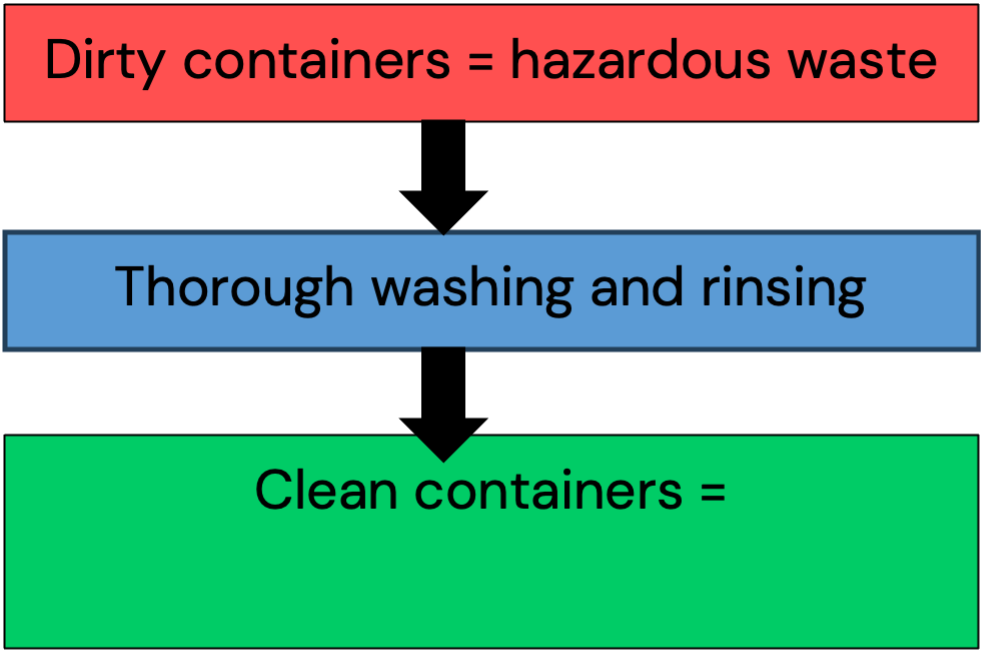
Containers that have held chemicals are classed as hazardous/special waste which have specific waste management legislation. However, if the containers are thoroughly washed and cleaned they are no longer classed as hazardous waste and can be recycled through farm plastic recycling services. The processes of cleaning pesticide containers are explained below. When carrying out these activities personnel must wear appropriate personal protective equipment. It is advised that you clean containers as soon as possible after they have been dispensed as the containers will be easier to clean when the contents have not been allowed to dry. The washings can be added to the spay tank.
Pressure rinsing
High pressure rinsing equipment can be used to clean pesticide waste materials. Most sprayers now have the ability within their induction tanks. To carryout rinsing there are different nozzle types which can be used:
- Multi hole static balls
- Rotating nozzles with fan jets
- Blade type nozzles
For use of nozzles please refer to the manufacturer guidance provided as this will stipulate water pressure and the most appropriate use for the nozzle. This will ensure that you are operating safely and using the best tool for the job. When cleaning you need to ensure that all parts of the container have been washed out, this will entail moving the container while cleaning. In addition, all containers need to be rinsed for a minimum of 30 seconds and should be visibly clean on inspection.
Manually triple rinsing
The steps for manually rinsing are shown in Figure 4. These steps for manual rinsing need to be repeated three times in an area which will not cause diffuse pollution to the water environment.

All equipment must be cleaned, including nozzles, caps, foil, containers and PPE. Please follow manufacturer instructions where necessary.
For both methods, once equipment has been thoroughly cleaned the containers must be allowed to dry and any residual material captured. Empty pesticide containers should never be re-used for any purpose except where the manufacturer offers a refilling service.
When disposing of the material, thoroughly cleaned material can be disposed of as per waste guidelines. Please note that you may need to recycle/dispose of material separately, e.g. caps and foil may not be able to be recycled in the same manner as containers, therefore, waste contractors should be consulted for guidance. All waste materials will need to be stored appropriately according to current guidelines until removed from farm. For more information on waste management click here.
For further guidance:
Farm Advisory have a Pesticide Information Note: Pesticide containers – cleaning and disposal.
Voluntary Initiative have Container Cleaning Practical Guide
- https://www.gov.scot/policies/agriculture-and-the-environment/pesticides/
- https://www.gov.scot/publications/pesticides-code-practice-using-plant-protection-products-scotland/
- http://www.legislation.gov.uk/uksi/2012/1657/pdfs/uksi_20121657_en.pdf
- http://eur-lex.europa.eu/LexUriServ/LexUriServ.do?uri=OJ:L:2009:309:0071:0086:EN:PDF
- https://assets.publishing.service.gov.uk/media/5a7c0154e5274a7318b90733/pb13894-nap-pesticides-20130226.pdf
- https://amenityforum.co.uk/
- https://www.netregs.org.uk/environmental-topics/materials-fuels-and-equipment/materials-and-equipment-for-agriculture-animal-care/spraying-pesticides/
- https://www.netregs.org.uk/legislation/scotland-environmental-legislation/current-legislation/pesticides-and-biocides/
- https://www.fas.scot/environment/water-management/pesticide-management/pesticides-records/
- https://www.farmingandwaterscotland.org/arable/pesticides/
- https://www.farmingandwaterscotland.org/wp-content/uploads/2022/11/KTR12Pesticides.pdf
- https://www.bcpc.org/product/uk-pesticide-guide-2024
Related resources
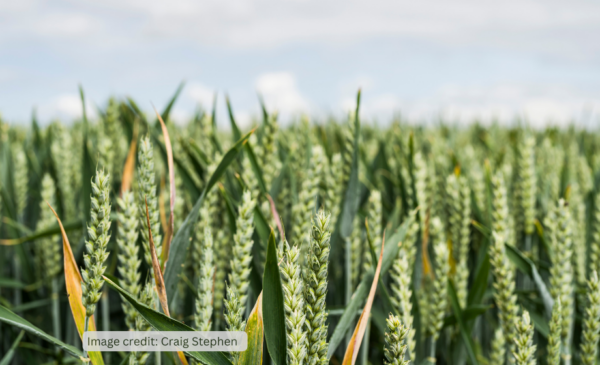
Integrated Pest Management and the Voluntary Initiative
How can you improve pesticide management on farm?
How can you improve pesticide management on farm? In this podcast we chat with Neal…

